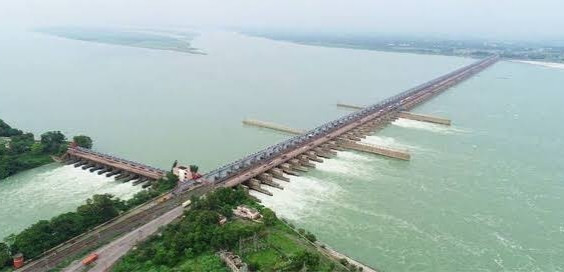
The Farakka Dam is a large water control project located on the Ganges River in the Murshidabad district of the Indian state of West Bengal. The dam is an important issue of water sharing and diplomatic relations between India and Bangladesh. The construction of the Farakka Barrage was completed in 1975, with the main objective of maintaining the navigability of the Hooghly River and increasing the efficiency of Kolkata Port. However, the impact of this dam has been deeply felt on both sides of the border, especially in Bangladesh.
Water distribution issues in the Indian subcontinent date back to British rule. After the partition of India and Pakistan (present-day Bangladesh) in 1947, conflicts arose over the distribution of the waters of the Ganges. The navigability of Calcutta port was declining, hence the plan of Farakka Barrage was adopted. The Government of India decided to construct the dam in 1961 and the dam was commissioned in 1975.
The Farakka Dam controls the flow of water in the Ganga River and through a barrage the water is diverted to the Hooghly River. This increased the depth of the river next to Calcutta port, which was very important for keeping the port operational. However, these activities had a significant impact on Bangladesh.
After the construction of the Farakka Dam, the water level of the Ganga River decreased during the dry season in northwestern Bangladesh. This results in reduced agricultural production, increased salinity of water and disturbed ecological balance. In particular, water shortages occur in the south-western part of the country due to reduced water flow of the Padma River. In addition, river erosion and soil erosion also increase, which negatively affects the quality of life of local people.
Long-term diplomatic negotiations began between Bangladesh and India over the impact of the Farakka Dam. In 1977, both countries signed a temporary settlement agreement, but it failed to provide a permanent solution. Later, in 1996 Prime Minister Sheikh Hasina and Indian Prime Minister H.D. A 30-year Ganga water sharing agreement was signed under Deve Gowda’s leadership. According to this agreement, the waters of the Ganges are shared between the two countries during the dry season.
The history of Farakka Dam is a long-term and sensitive issue regarding water sharing between India and Bangladesh. Although the dam played an important role in maintaining the navigability of the Kolkata port, its negative impact on Bangladesh was deep and widespread. However, the Water Sharing Agreement of 1996 managed to resolve this issue between the two countries to some extent. The history of this dam will be considered as an instructive example in future diplomatic relations between the two countries.

 Md. Ibrahim Hossain Bishal
Md. Ibrahim Hossain Bishal 


















